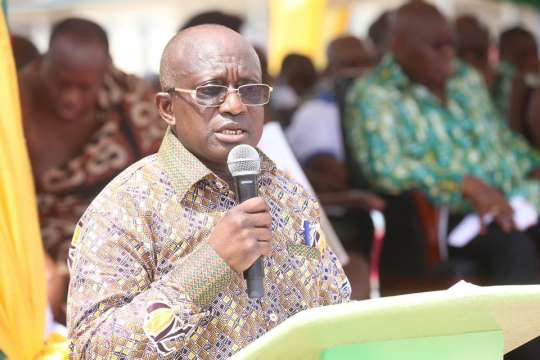The prospect of challenges facing the health sector in the country and the periodic conduct of GDHS which is the 7th in the series has prompted a research by the Ghana Statistical Service (GSS) with the essence of providing essential data and information to solve the problems.
The report dubbed “Ghana 2022 Demographic and Health Survey for Savannnah Region and Upper WEST” was launched at Wa in the Upper West Region on Tuesday 5th March.
The Ghana Demographic and Health Survey was first conducted in 1988 by the Ghana Statistical Service followed by 1993, 1998, 2003, 2008 and the current one in 2022.
The Ghana 2022 Demographic and Health Survey highlights the demographics of 18, 540 households across the country on Sustainable Development Goals indicators including fertility rate, maternal and new born, children’s nutritional status, family planning, child mortality, malaria and HIV.
A total of 15,014 women aged 15-49 and 7,044 men aged 15-59 in the fertility age and 4,935 children from zero to 2 years took part in the 2022 GDHS survey across all the sixteen regions of Ghana.
Addressing participants at the event, the Director of Administration at the Ghana Statistical Service Kwadwo Asante Mensah said the aim of the survey was to supply information on healthcare demographics in the country.
“In essence the Ghana 2022 Demographic and Health Survey will provide essential data and information which will help in our understanding of the demographics and health sense of Ghana and assist in making comparison with both our historical data and similar surveys conducted in other countries.”
Kwadwo Asante expressed optimism that the Ghana Health Service and other stakeholders would work with the findings to improve upon the quality of lives in the two regions.
“We know that our findings will help our stakeholders to design appropriate and relevant interventions to improve the quality of our people.”
The Upper West Regional Director for the Ghana Statistical Service who led the first presentation for the event identified that between 2014 and 2022 the Savannah region recorded a stunting growth of 21 percent as compared to 17 percent for the Upper West Region.
He also identified that infant mortality although the country was doing better in areas of child mortality, the Savannah region still recorded 63 percent of infant mortality as compared to the Upper West Region with 42 percent.
Alhaji Iddrisu Andani Abdulai, the Savannah regional director for the Ghana Statistical Service during his presentation noted that comparatively, the Savannah region dominated the Upper West Region inadequate potable water sources and open defecation practices.
Alhaji Iddrisu Andani Abdulai however called on stakeholders to do their utmost best to eradicate the two practices.
The 2022 Ghana Demographic and Health Survey was partnered by the government of Ghana, Ghana Health Service, Ghana Statistical Service and it’s international partners including the World Bank, the Global Fund, World Health Organization, United Nations International Children Emergency Fund, United Nations Population Agency UNFPA, United States Agency for International Development USAID, Korea International Cooperation Agency and 75 Health For All.
The Ghana 2022 Demographic and Health Survey brought together stakeholders from both the Savannnah Region and Upper West Region to analyze the report and disseminate the information to others.
By: Iddrissu Hafiz | Metrotvonline.com | Ghana












